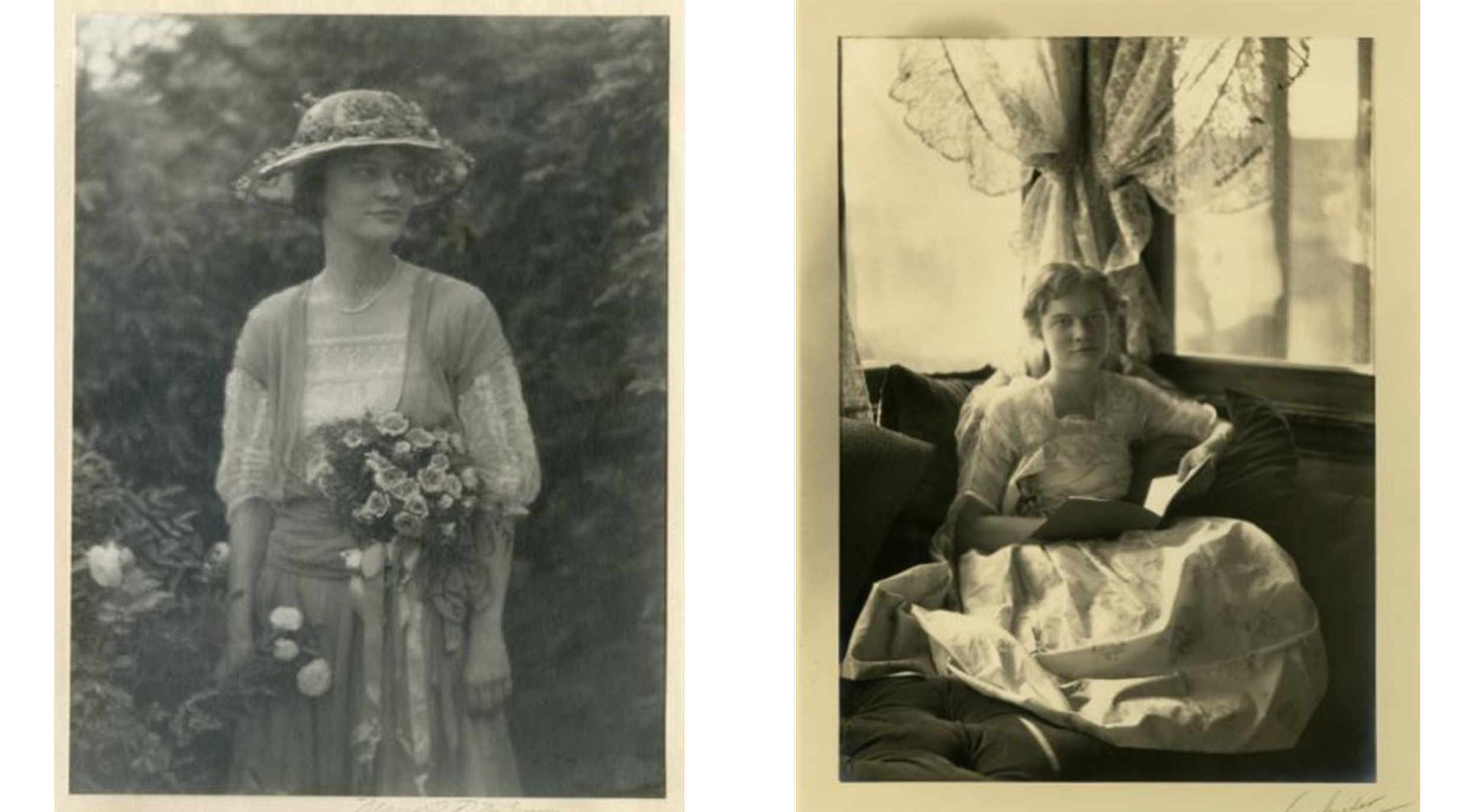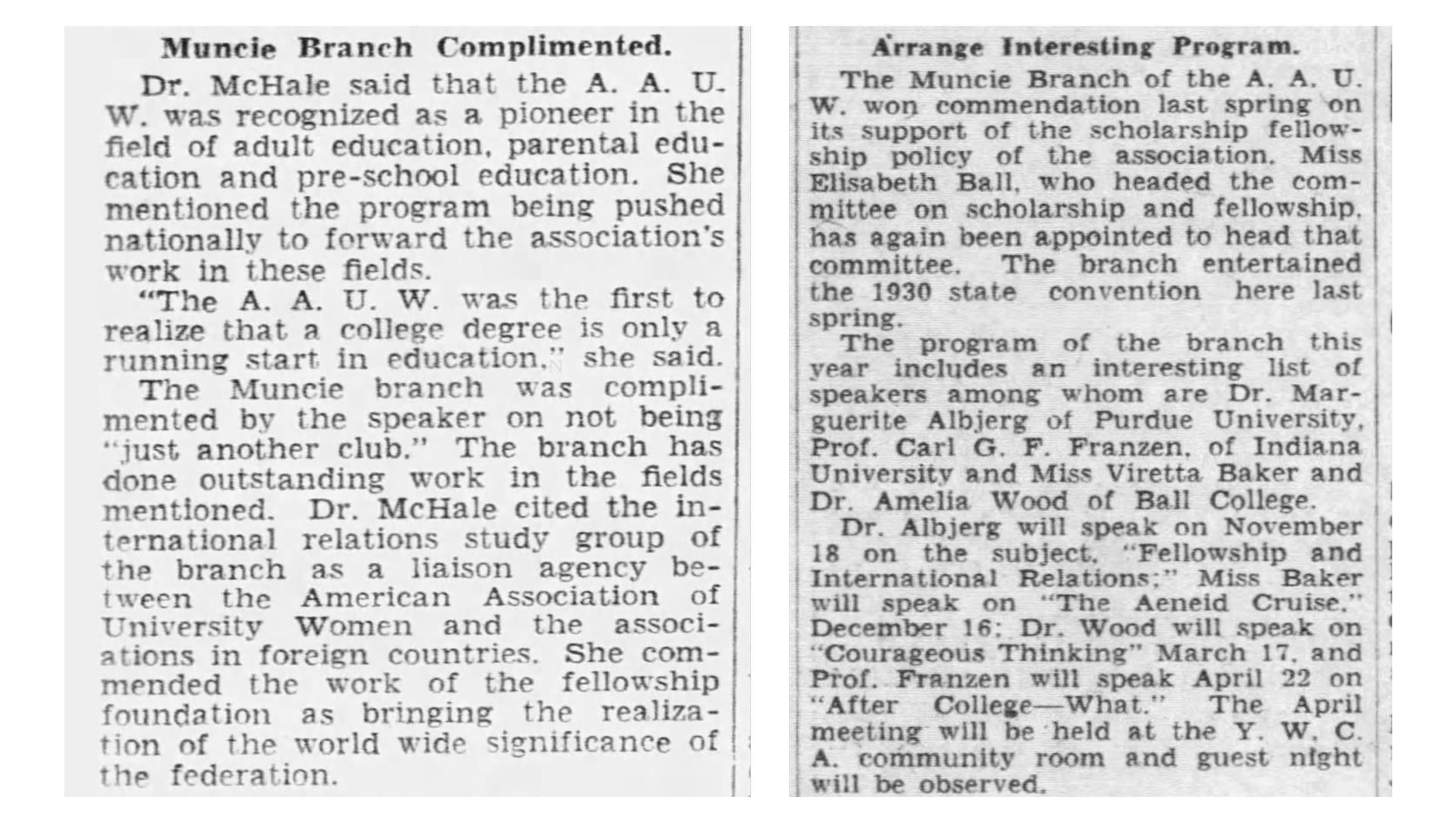Betty Ball & The AAUW
Written by Mindy Price, Collections Manager
Today, women make up the majority of college undergraduates both nationally and globally—but this wasn’t always the case. Women have had to fight for opportunities outside of the domestic sphere, and one of their biggest champions has been the American Association of University Women (AAUW). The AAUW is a national grassroots organization dedicated to empowering women and advocating for gender equity in education and the labor force.
A Brief History of the National Organization
The AAUW traces its roots back to 1881 when a group of women college graduates gathered in Boston, Massachusetts to discuss how they could encourage and support women looking for opportunities to broaden and utilize their education. With this vision in mind, the group organized as the Association of Collegiate Alumnae (ACA) the following year. As popularity grew outside of Boston, members formed branch locations in Washington, D.C., New York, San Francisco, and Philadelphia.
Western Home Journal, October 26, 1882, Newspapers.com
Shortly after their founding, the ACA organized a committee to tackle the myth perpetuated by Boston physician Dr. Edward H. Clarke that a college education would harm women’s health. The committee sent a survey out to ACA members and tabulated the results in a report, titled Health Statistics of Female College Graduates, which was co-published in 1885 with the Massachusetts Bureau of Statistics of Labor. Before most universities became coeducational, the ACA also fought for women’s classes to be on par with men’s.
Over the next few decades, the ACA continued to expand. In 1889, the group merged with the Chicago-based Western Association of Collegiate Alumnae (WACA). In 1921, the ACA merged once again – this time with the Southern Association of College Women (SACW). With this union, the organization officially rebranded as the American Association of University Women (AAUW). With more members and regional branches nationwide, the group quickly established itself as an effective network of women empowering women. Today, the AAUW has more than 170,000 members and supporters, 1,000 local branches, and 800 college and university partners.
The Times Record, October 26, 1889, Newspapers.com
Since their founding, the AAUW has funded and championed countless women through fellowships, grants, and awards. Focusing on causes like education, research, training, and leadership, the organization has made a lasting mark on history. In 1920, the group participated in a larger fundraising campaign led by American women for the purchase of additional radium for Marie Curie’s research. In less than a year, the Marie Curie Radium Fund raised enough money to purchase one gram of radium for the Nobel Prize winning chemist and established a trust for her daughter to continue the research. During World War II, the AAUW established the War Relief Fund to assist and relocate university women and scholars displaced by the Nazi regime. They also advocated for the establishment and continued existence of the U.S. Department of Education and Title IX protections against sex discrimination in education.
Left: New York Tribune, May 15, 1921, Newspapers.com. Right: Lincoln Star Journal, October 6, 1940, Newspapers.com
Elisabeth Ball & the Muncie Branch
Muncie organized its own branch of the American Association of University Women on January 16, 1925. Gathering at the Muncie Chamber of Commerce for their inaugural meeting, seventy-two women pledged themselves as founding members. Anna Doan Stephens (1880-1980) was chosen as the first branch president. A practicing Quaker and suffragist from Westfield, Indiana, Anna earned two degrees from Earlham College and married physician and fellow alum, Dr. Walter C. Stephens.
Left: Elisabeth Ball in her Vassar College graduation dress, 1922. Right: Elisabeth Ball reading a book in her Oakhurst home, 1915. Both from the Minnetrista Heritage Collection.
Elisabeth “Betty” Ball (1897-1982) was selected as the first secretary for the Muncie branch. The only child of George and Frances Ball, Betty was fortunate to be raised by parents who understood the value of education. She attended her mother’s alma maters—Buffalo Seminary and Vassar College in New York—where she earned a degree in Botany. Passionate about nature, literature, bookbinding, art, and travel, she enjoyed sharing her interests with others in Muncie. During her time with the AAUW, she directed a play and hosted several branch meetings at her Oakhurst home on Minnetrista Boulevard where she gave talks on topics of interest.
Left: Muncie Evening Press, December 12, 1932, Newspapers.com. Center: Muncie Evening Press, December 19, 1934, Newspapers.com. Right: The Easterner, December 15, 1927, Ball State Digital Media Repository.
Betty also served as the chair of the branch’s Fellowship-Scholarship Committee. The committee received many accolades under her leadership, and she was reelected as its chair for a number of years. Betty and her fellow founding members laid the groundwork for the AAUW Muncie Branch’s longevity and continued success.
Left: The Star Press, May 22, 1930, Newspapers.com. Right: The Star Press, September 28, 1930, Newspapers.com.
This year, the group is celebrating 100 years of dedication and service to the community. Through their annual used book sale and membership dues, they raise funds for nontraditional student scholarships as well as sponsorships for community initiatives such as the White River Beautification Project and Ball State Women’s Week. The group has also joined forces with the Muncie Branch of the League of Women Voters to host guest speakers and promote voter registration.
Congratulations, AAUW – Muncie. Here’s to another century of championing progress and equity for women and girls in our community!

